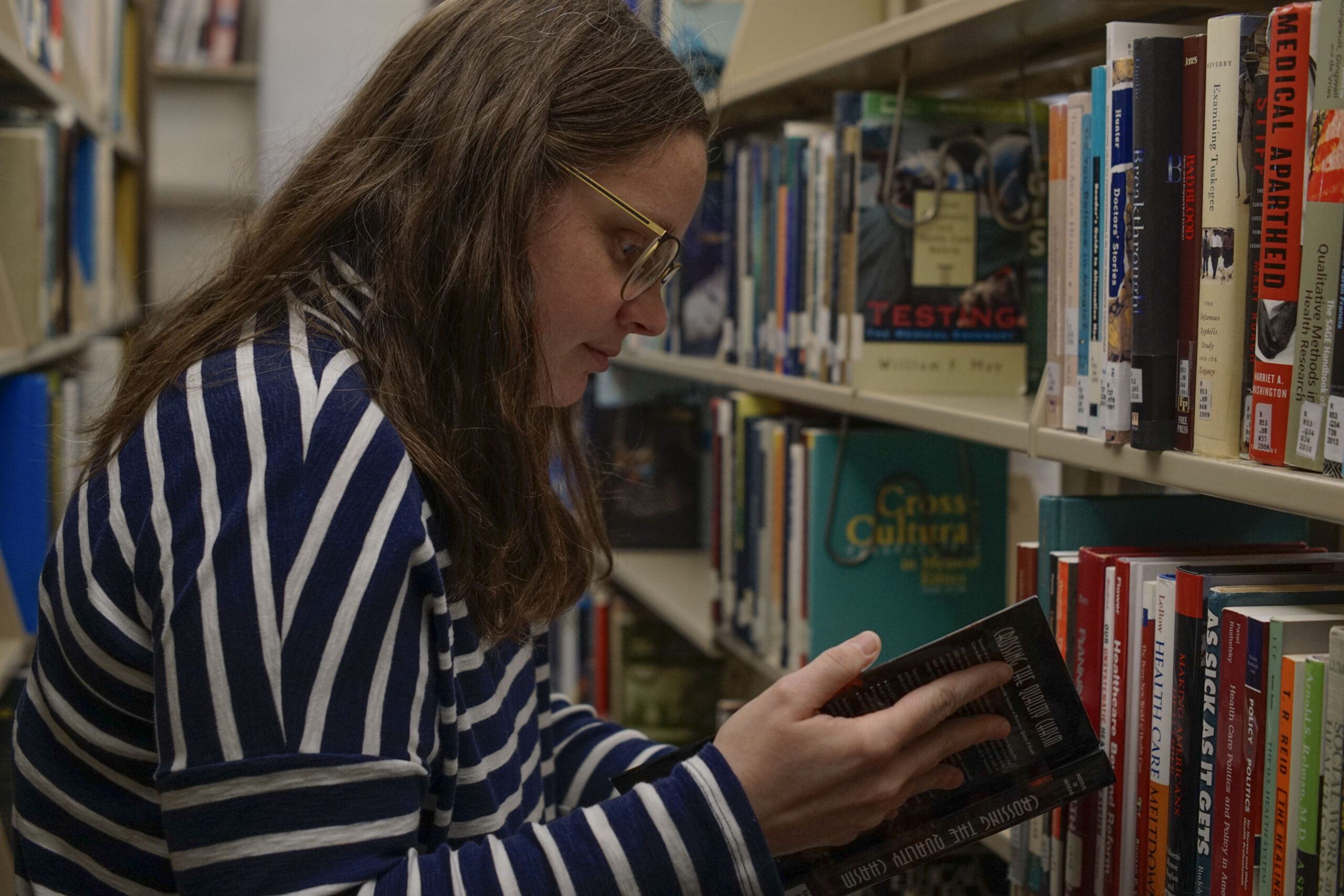The Good Library is getting rid of books.
In an attempt to trim down its collection of roughly 190,000 physical books, the library is undertaking a massive deaccessioning — or “weeding” project — in which librarians are removing thousands of books from the catalog.The project, which started last summer, serves as a way to cut down on books that are not being read. All books have to meet two criteria to be withdrawn from the library’s collection: they were published in 2000 or earlier and they have not been checked out since 2012.
Fritz Hartman, the library director, says that the librarians begin the process by choosing a subject of the library’s collection to review and notifying faculty that work in that subject area.
“We’ll say, ‘hey, do you want to consult on this? Are there books [you want to keep]?’ … Most faculty say ‘ah, no, it’s okay.’ A lot of people don’t want to do it because nostalgia kicks in!”
When faculty do wish to review the collection, though, they can look through the stacks and save any books they choose.
Once the professors clear the collection for review, Hartman explains, the librarians go through the stacks and individually look at each book on the shelf.
“We will, one by one, look at the books. We know that anything newer than [2000] is automatically safe. Then I’ll look in the back of the book, and if it’s been checked out since 2012, it’s automatically safe.”
Hartman also says that there are judgment calls to make. Some books potentially haven’t been checked out because they were hidden behind others, while some books that have been checked out after 2012 are irrelevant now. Hartman gives the example of “The Internet and You!” as a book that could be withdrawn.
The books that don’t make the cut are taken to another filtering process, carried out by both librarians and student workers. Adena Daniels, a junior student worker at the library who processed roughly 3,500 books last summer, explained their role in the process.
“Every day [over the summer],” they said, “I’d get there and there would be between maybe three and seven carts filled with books, some of them … with four rows of books.”
Daniels then runs books through three checks. “First,” they said, “we check local holdings.”
If a book is held by another local library, the Good Library’s copy heads straight for withdrawal. Otherwise, Daniels moves on to the next step: checking to see if the book is the last copy in the state of Indiana. When that is the case, which is fairly rare, the library ships it off to Indiana University.
According to Hartman, books go to IU because it’s a “research library … they collect as much as they can.” There, they will likely put many of the books “into a deep storage of some kind.”
Finally, Daniels said, “after we check the holdings, that’s when we check the stats.” Each book undergoes one last check on the publication and the most recent checkout date, and finally, the book is withdrawn.
“It’s kind of fun,” said another student worker, Caleb Shenk, as he described the process of withdrawing books from the library’s collection. “We take the book, we digitally withdraw it from the system, and then we take a Sharpie to it. We slash through the barcode and stamp it ‘Withdrawn’ on the front.”
“But it’s kind of sad,” Shenk added. “The ability to have all these books at our hands is going away. There’s more ebooks now, but that’s different.”
While the library has roughly the same number of physical books as it did 10 years ago, Hartman says that the number of digital books has jumped from about 5,000 to a staggering 530,000. Yet the physical circulation has dropped by roughly 50%, and many of the physical copies are no longer needed.
Hartman offers an analogy. “Making a table out of oak or poplar wood, like every table would have been back in the day, is a luxury. And a book, a physical book, is a luxury. One that we should have, but I think we should understand what it is.”
Aside from simply reducing the collection, the weeding serves as a way to create space in the library. GC’s 2021 campus master plan calls for a potential redesign of some areas of the library, and having fewer books means more space. As Shenk put it, “It’s more useful to have study spaces than 50-year-old books.”
And, perhaps most importantly to those who value physical books, the library gives the withdrawn books to a familiar place: Fables, the local bookstore.
“They have the time, and the expertise, and the motivation to actually try to sell the books,” Hartman said.
Fables sells the used books both in-person and online. The library gets a small share of any profits, but Hartman said that it’s minimal — and relatively unimportant. “What I care about is that the book gets some use.”
“We believe strongly that we need a bookstore in our town,” he added. “I think that’s important.”



